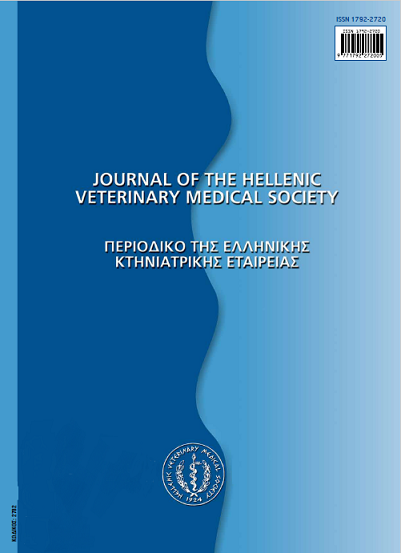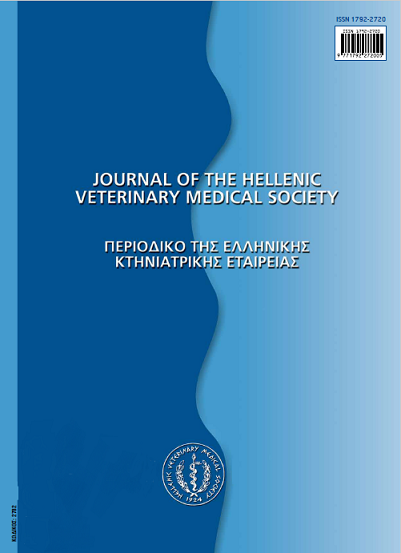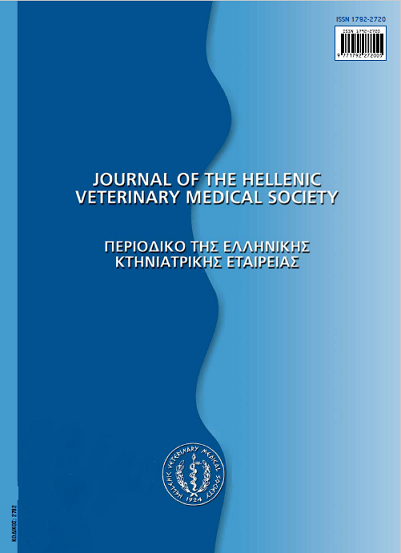Treatment of canine leishmaniosis: An update.
Abstract
The drugs, currently recommended in the treatment of canine leishmaniosis, include meglumine antimonate, allopurinol, paromomycin (aminosidine) and amphotericin B. With the exception of meglumine antimonate, where an optimal dosage has been established (75 mg/Kg BW, every 12 hours, SC), that of allopurinol (10-20 mg/Kg, BW BID, per os), paromomycin (5-10 mg/Kg BW BID, SC or IM) and amphotericin Β (0,5-0.8 mg/Kg BW, 2-3 times weekly, IV, up to a total dose of 8-15 mg/Kg BW), still remains empirical. Although the side effects are relatively few and harmless with the use of meglumine antimonate and allopurinol, they are often life-threatening with paromomycin (ototoxic, nephrotoxic) or amphotericin Β(nephrotoxic). Although the current antileishmanial medications result in the clinical cure of the affected animals and may decrease the contamination potential of sandflies, a parasitological cure is not but occasionally achieved. Therefore, prolonged administration of allopurinol, with or without the intermittent use of meglumine antimonate, is recommended in an attempt to avoid clinical flare-ups. However, repeated cycles of treatment with meglumine antimonate may lead to the emergence of resistant Leishmania spp clones. Withdrawal of medication is justified only when two PCR tests, done on bone marrow samples, 6-months apart, are negative. In the future, the use of cytokines produced by activated Th-1 cells (INF-γ, IL-2, IL-12), may resolve the controversial issue of permanent cure in the dog.
Article Details
- How to Cite
-
SARIDOMICHELAKIS (Μ. Ν. ΣΑΡΙΔΟΜΙΧΕΛΑΚΗΣ) M. N., KOUTINAS (Α.Φ. ΚΟΥΤΙΝΑΣ) A. F., & MYLONAKIS (Μ.Ε. ΜΥΛΩΝΑΚΗΣ) M. E. (2018). Treatment of canine leishmaniosis: An update. Journal of the Hellenic Veterinary Medical Society, 52(2), 97–106. https://doi.org/10.12681/jhvms.15411
- Issue
- Vol. 52 No. 2 (2001)
- Section
- Special Article

This work is licensed under a Creative Commons Attribution-NonCommercial 4.0 International License.
Authors who publish with this journal agree to the following terms:
· Authors retain copyright and grant the journal right of first publication with the work simultaneously licensed under a Creative Commons Attribution Non-Commercial License that allows others to share the work with an acknowledgement of the work's authorship and initial publication in this journal.
· Authors are able to enter into separate, additional contractual arrangements for the non-exclusive distribution of the journal's published version of the work (e.g. post it to an institutional repository or publish it in a book), with an acknowledgement of its initial publication in this journal.
· Authors are permitted and encouraged to post their work online (preferably in institutional repositories or on their website) prior to and during the submission process, as it can lead to productive exchanges, as well as earlier and greater citation of published work.












